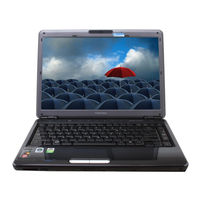Toshiba M300-EZ1001X Manuals
Manuals and User Guides for Toshiba M300-EZ1001X. We have 2 Toshiba M300-EZ1001X manuals available for free PDF download: User Manual
Advertisement
Toshiba M300-EZ1001X User Manual (233 pages)
Toshiba Satellite Tv System User Manual
Table of Contents
Advertisement
Related Products
- Toshiba M300-EZ1001V
- Toshiba L505D-S5983 - Satellite Notebook - AMD AthlonTM II dual-core M300 2.0GHz 15.6" Widescreen 3GB DDR2 3
- Toshiba Portege M300
- Toshiba M300-ST3401
- Toshiba M300-ST3402
- Toshiba M300-ST3403
- Toshiba M300-S1002V
- Toshiba M300-S1002X
- Toshiba Satellite M300D
- Toshiba Satellite M30-SP350

